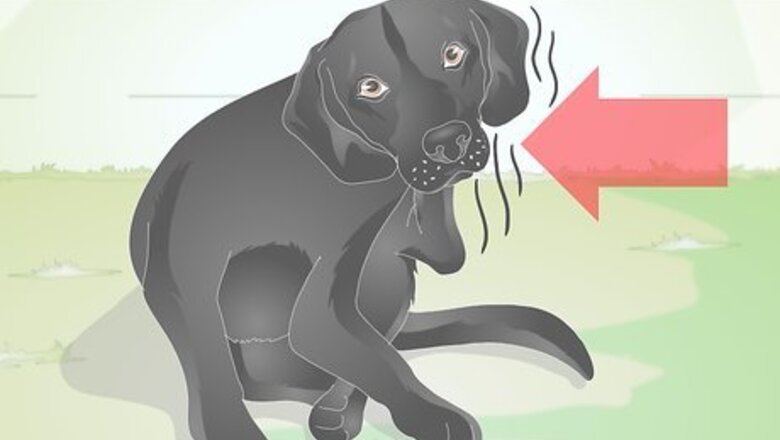
views
Identifying Allergies
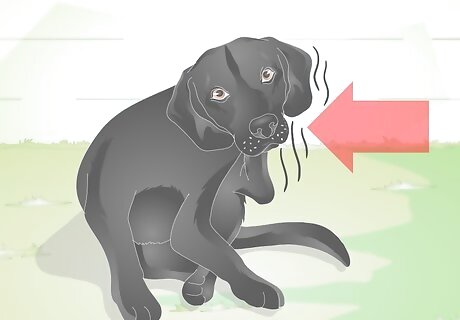
Look for the signs of allergies in your dog. Allergies are caused by substances that, when inhaled or absorbed by the body, cause the body to produce a chemical called histamine that results in inflammation. Most dog allergies appear as a skin problem and produce inflammation, itching, and redness of the skin. Symptoms include: Itching. Yearlong itching may mean your dog has food allergies. Seasonal itching may mean your dog has atopy. Brown staining of paws. Dogs will frequently lick itchy paws leaving a brown discoloration. Frequent ear or skin infections due to breakdown of the skin barrier. Red skin Hair loss Bad odor due to secondary bacterial or yeast infections
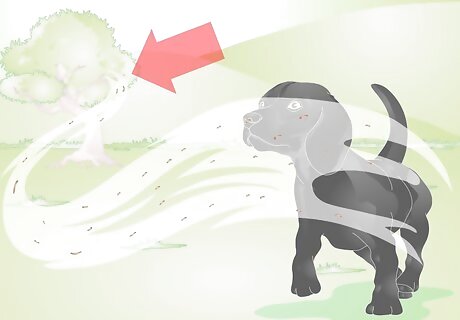
Investigate possible causes. There are many things which can cause an allergy in a dog. Dogs can be allergic to so many things that it can be hard to pinpoint the cause. Some causes of allergies in dogs include: pollen from trees, grass or weeds, dust and house dust mites, dander, food ingredients, fleas and flea medications, mold, and feathers. Some can cause immediate life threatening reactions. This is an anaphylaxis type of a reaction and it is generally rare. The body over-reacts to an allergen (such as a bee sting, medications or a vaccination) by producing chemicals which can put the body into shock. This type of allergy is different from others, which are the sensitivities which can make a dog miserable and decrease its quality of life.
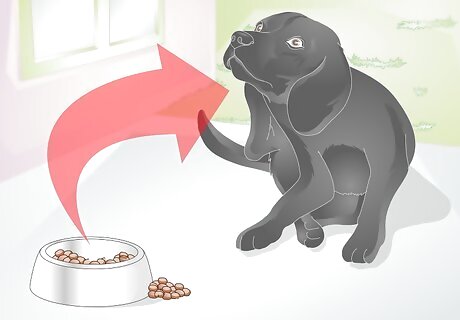
Pay attention to when the allergic reaction gets bad. Some allergies are seasonal (such as from pollen), while others are year round problems, such as food or dust mite allergies. Try to determine when they are happening to help determine what type of allergies your dog might be having. We can group allergies into three general categories: Food reactions (allergies and intolerance) Flea bite sensitivity Airborne allergens
Treating Allergies at Home

Try an elimination diet. There are different approaches to treating canine allergies. For food allergies, this can mean a trial-and-error approach to find out which food ingredient is triggering your dog's allergies. Sometimes a simple food change can mean a world of difference for your dog. This elimination does take some time, as it will take the body up to six weeks to eliminate the allergen from the body. Common food allergens for dogs include beef, chicken, pork, soy, corn, and wheat. Keep in mind that a dog may have an allergic reaction to a food that they have eaten for weeks, months, or even years. A dietary allergy may cause vomiting and diarrhea along with other symptoms.
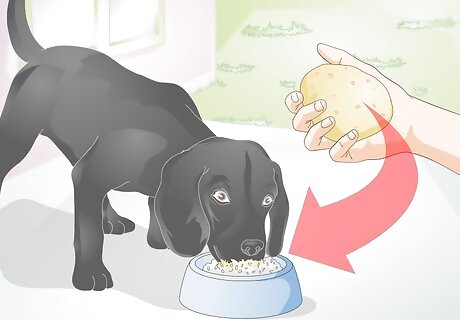
Feed the dog a new diet. If you suspect your dog has a food allergy you need to feed it a new diet that consists of food ingredients your dog hasn't eaten in the past. For example, you might opt for a food that is a blend of duck and peas, salmon and potato, or venison and rice.

Consult your veterinarian about diet changes. This is especially true if you are doing an elimination or totally new diet. If possible, always choose a diet formulated by professionals. Don't try to make your own dog food diet unless you consult a pet food nutritional specialist, as a dog's dietary needs are very different from humans. You can also ask your dog's veterinarian about a hypoallergenic diet. Your dog will have to stay on this diet for at least 8 weeks and eat this food exclusively (no treats, table scraps, etc.) before you will see a benefit.
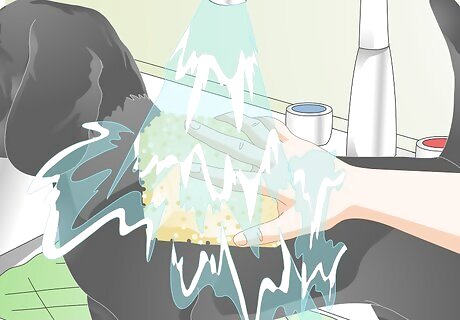
Bathe your dog frequently. If food isn't the culprit, you will need to employ different tactics to control the allergy symptoms. These can include topical treatments, such as frequent bathing of the dog to remove pollen using a hypoallergenic shampoo. Even a simple wiping off of the feet and non-haired regions of your dog with a damp washcloth can help to remove allergens. Putting socks, a baby onesie, or an old T-shirt on a dog during allergy season can also help keep allergens off of your dog when it is outside.
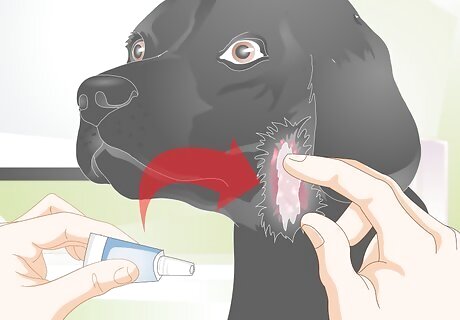
Use topical products. There are also topical skin products, such as cortisone, which can be used to reduce inflammation on the dog's skin. These products reduce the inflammatory response and therefore reduce the itchiness of your dog's skin. However, when these products are used daily for a long period of time, the steroid will cause the skin to become thin and frail.
Treating Allergies With Medication
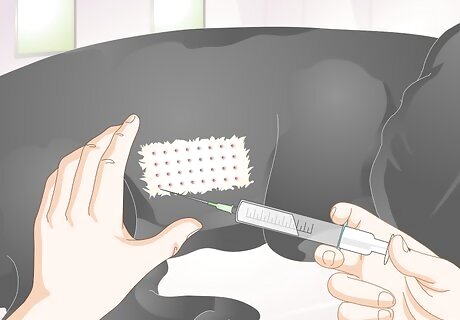
Ask your vet to do allergy testing. Blood or skin testing can be performed to help determine the cause of your dog's allergies. Based upon these results, an immunotherapy vaccine may potentially be developed to be given to desensitize your dog against its allergens. In some cases, immunotherapy vaccines can cost about the same as conventional allergy treatments (medications, blood testing). Allergy shots such as these will be administered at home by you, the dog owner, and have been proven to be effective for three out of four out of 10 cases at alleviating the signs of allergies when combined with other allergy treatments, such as shampooing, use of fatty acids in the food, and antihistamines. Allergy shots may have some effectiveness for another three out of four of 10 cases.
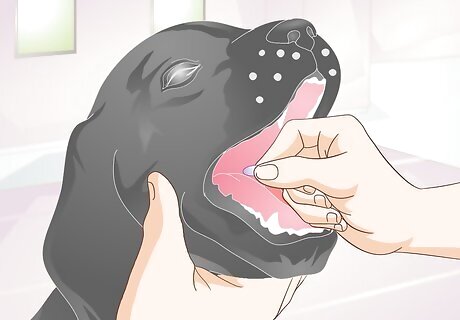
Give your dog allergy medication. Medications are available to help combat the symptoms of allergies. Most will have to be obtained from your veterinarian after an examination to make sure they are safe for your dog. Medications used include: Steroids- such as prednisone or Depo-Medrol Essential fatty acids- enhance the effectiveness of antihistamines and steroids Apoquel- a Janus kinase inhibitor Cyclosporine- an immunosuppressant Antihistamines- such as Benadryl. (Note: Results are often disappointing in dogs.)
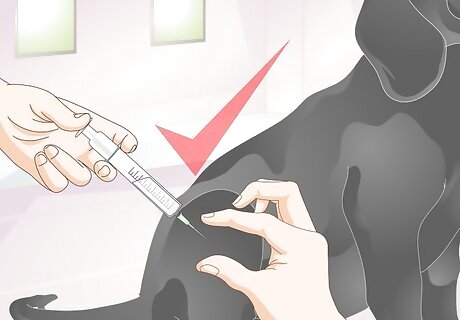
Treat additional connected health issues. If your dog has a secondary bacterial or yeast infection, topical or oral antibiotics and/or anti-fungal medications will need to be taken to control or eliminate these infections. This will help your dog's immune system to recover and its overall health to improve.











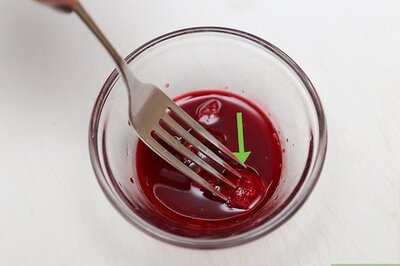


Comments
0 comment